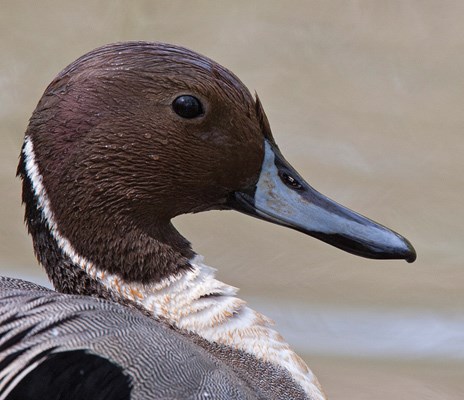Fall brings with it many changes. Cottonwoods and maples put on a fine show of colour; and colourful mushrooms seem to pop up everywhere in local woods. And, our feathered friends are on the move.
Maplewood Conservation Area recently experienced a "warbler wave" with dozens of Wilson's, orange-crowned, and yellow-rumped warblers at every turn of the trail. In fact, a few weeks earlier an American redstart attracted much attention from birders. These species, along with the western tanager, black-headed grosbeak, flycatchers and purple martins that delighted us all summer, are now headed for warmer climes, some (like the martin) as far south as Brazil. The tiny (less than five grams) rufous hummingbird makes an amazing journey all the way to southern Mexico. Some of these migrants breed on the North Shore, while others are passing through (in passage) - resting and refueling.
And while some birds are departing the North Shore, others are settling here for the winter. Shorebirds (plovers and sandpipers) have largely passed through, but a few, like the greater yellowlegs, dunlin, sanderling, black turnstone and long-billed dowitcher should be watched for on a visit to the shore.
Waterfowl, like scoters, goldeneyes, and bufflehead that breed in the distant places like Alaska and B.C.'s Interior, begin to trickle in for their winter stay. In addition to the ducks mentioned, keep a weather eye (old seaman's term) for northern pintail, green-winged teal, American wigeon, Eurasian widgeon (rare), red-breasted and hooded mergansers and they'll all be in their beautiful winter plumages. The common loon, which breeds on freshwater lakes in the Interior, will lose its breeding plumage; reverting to its winter (but still beautiful) plumage. The same is true of red-necked, horned and eared grebes. This by the way is why you need a good field guide (or APP) that shows all plumages - breeding, winter and immature.
October is when raptors (birds of prey) are also on the move like Cooper's, red-tailed and sharp-shinned hawks, the peregrine falcon, merlin and northern harrier. Don't be surprised to see a harrier normally associated with grassy meadows, following a mountain ridge, like Mount Seymour's Mystery Peak.
Our beloved ospreys depart the North Shore for warmer points south like Mexico, Central American and even South America. And it is still possible to see migrating turkey vultures, and a few may even winter here. Bald eagles stationed on the treetops, pilings and dolphins, wait patiently for the opportunity to nab a fish or a duck for dinner.
There are watchable changes in our small birds too. Bushtits which were seen in breeding pairs all summer now form their winter flocks of 10, 15, 20, of these tiny birds. Fox sparrows return from summer nesting areas in the mountains and hermit thrush make their way through down to South America.
Ripe fruit of the native pacific crabapple attract a host of willing diners including American robin, waxwings, purple finch, house finch and flickers.
There was great excitement at Maplewood Conservation Area when in September a green heron was spotted at the bridge over the barge channel. This small heron is a mere 46 cm in length. It was very special indeed - and it let everybody got a good look at it fishing for its dinner. The green heron is known to use a lure to attract and catch fish!
One morning we'll all wake up to a glitter of frost on the lawns, sun shining through gold and yellow maple leavers - and the delicate aroma of fresh pumpkin pie. Fall indeed is a season of change and of opportunity - to enjoy nature in all her glory.
Al Grass is a naturalist with Wild Bird Trust of British Columbia, which sponsors free walks at Maplewood Conservation Area on the second Saturday of every month. The next walk is Saturday Oct. 13, where you can learn more about the migration at Maplewood. Meet at 10 a.m. at Maplewood Flats, 2645 Dollarton Hwy. (two kilometres east of the Iron Workers Second Narrows Memorial Crossing). Walks go rain or shine. Info: wildbirdtrust.org.



